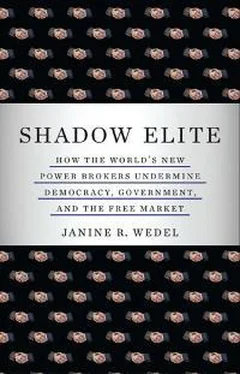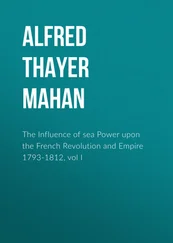W. Patrick Lang, who earlier served stints as both a Defense intelligence officer for the Middle East, South Asia and Counter-Terrorism and a director of Defense HUMINT (human intelligence collection) for the Defense Intelligence Agency, recalls a revealing conversation he had with Feith in his office in early 2001. When Feith learned that Lang is an Arabist, he asked him “Is it really true that you really know the Arabs this well, and that you speak Arabic this well? Is that really true?” When Lang replied in the affirmative, Feith responded “That’s too bad.” As Lang observed, the neoconservatives typically employed “people who were not intelligence professionals. Rather, they hired people brought in because they thought like [the neoconservatives].” Here we see disregard both for bureaucratic and professional authority. 87
With trusted people in replacement units created by Neocon core members, both could be sidelined. Paul Pillar, the CIA officer in charge of coordinating the intelligence community’s assessments regarding Iraq, wrote that “The administration’s rejection of the intelligence community’s judgments became especially clear with the formation of a special Pentagon unit,” the Counter Terrorism Evaluation Group. As well, the Office of Special Plans replicated (and sometimes overrode) some functions performed in other parts of the Pentagon. One of these was war planning and execution, typically in the hands of “combatant commanders” who report to the secretary of defense. Yet a senior State Department official confirmed that he had seen a number of documents on war planning that had been assembled by the Office of Special Plans, according to reporter Jane Mayer. 88
Another task undertaken by the Office of Special Plans, the preparation of talking points, is typically the prerogative of the intelligence agencies that collect and analyze the data on which talking points should be based. But the mission of the Office of Special Plans was “developing propaganda and pushing . . . an agenda on Iraq,” in Kwiatkowski’s words, and desk officers had to quote Office points in materials compiled for senior officials and for anyone outside the Pentagon. 89Saddam Hussein’s use of chemical weapons, the supposed connection between Hussein and Al Qaeda, Hussein’s alleged aid to the Palestinians, and signs that his nuclear program was viable and that he was planning to use nuclear weapons (thus making him a serious threat to the United States)—all were talking points designed to help sell the war. 90By late 2002, the Office of Special Plans eclipsed the CIA and the Pentagon’s own Defense Intelligence Agency, becoming the administration’s primary source of intelligence on Iraq’s alleged WMDs (weapons of mass destruction) and Hussein’s alleged Al Qaeda ties, as journalist Seymour Hersh has written. 91
Whether to the Pentagon or the NSC, Ahmed Chalabi and his Iraqi National Congress were core suppliers of such intelligence. This took place despite Chalabi being long distrusted by the CIA and the State Department and being wanted for allegedly defrauding the Jordanian government in the 1980s to the tune of $200 million. His operation, which had in the past run a forgery shop, was seen by many in the intelligence community as providing questionable information at best. 92Nonetheless, both the Counter Terrorism Evaluation Group and the Office of Special Plans had a special relationship with Chalabi and his group. Both offices assessed intelligence based on information supplied by these sources—assessments typically not shared with or vetted by counterparts in relevant government quarters. 93
In one arrangement brokered by Perle, Chalabi and his INC staff supplied intelligence “information” to the Counter Terrorism Evaluation Group. This unit was manned by two longstanding Perle associates: core member David Wurmser and Michael Maloof, with whom Wurmser had coauthored the “Clean Break” report. The two combed the voluminous influx of daily intelligence reports on terrorism, looking for documentation of connections between terrorist organizations and their potential state sponsors. They were to dispel the common view in the intelligence community that such groups did not work together. The men did not disappoint. They indeed posited links between Al Qaeda and Saddam Hussein’s Iraq—findings that did not square with those of other intelligence units and agencies. 94
Nonetheless, it was “news you can use.” Maloof briefed Perle, who had security clearance through the Defense Policy Board, in his suburban Washington home. Maloof and Wurmser also briefed senior Bush administration officials, including Rumsfeld and Director of Central Intelligence George Tenet, as well as Wolfowitz, Stephen J. Hadley (who had worked under Wolfowitz in Reagan’s defense department), Bolton, and Libby. The Office of Special Plans, for its part, was charged with gatekeeping: approving the exact wording to be used by other officials when discussing Iraq, weapons of mass destruction, and terrorism. Kwiatkowski said that she “witnessed neoconservative agenda bearers within [the Office of Special Plans] usurp measured and carefully considered assessments, and through suppression and distortion of intelligence analysis promulgate what were in fact falsehoods to both Congress and the executive office of the president.” To show that Saddam Hussein presented an imminent threat, she noted, the office “developed pretty sophisticated propaganda lines which were fed throughout government, to the Congress, and even internally to the Pentagon.” One such (leaked) report, titled “Assessing the Relationship Between Iraq and al Qaida” and prepared either by the Counter Terrorism Evaluation Group or the Office of Special Plans, is marked as a briefing paper for the NSC and Office of the Vice President. 95
This “intelligence” was used to help sell intervention in Iraq. Jim Lobe reports that “the offices fed information directly and indirectly to sympathetic media outlets, including the Rupert Murdoch-owned Weekly Standard and Fox News Network, as well as the editorial pages of the Wall Street Journal and syndicated columnists, such as Charles Krauthammer.” 96
In time, prewar intelligence activities orchestrated by Feith and other Neocon core members came under investigation. Feith, who left his post as defense undersecretary in August 2005, became the subject of review by the Pentagon’s inspector general. In 2007, the IG found that the Office of Special Plans had “developed, produced, and then disseminated alternative intelligence assessments on the Iraq and al Qaida relationship, which included some conclusions that were inconsistent with the consensus of the Intelligence Community, to senior decision-makers” and that Feith’s intelligence briefings to the president presented “conclusions that were not fully supported by the available intelligence.” The Senate Select Committee on Intelligence had already established that the unit exaggerated the Iraqi threat to justify the war in its first report of July 2004, which focused primarily on prewar assessments of the intelligence community. In a second report, issued in June 2008, the Committee found that Feith’s office conducted sensitive intelligence activities without the intelligence community or the State Department knowing about them. While the vice chairman of the committee characterized Feith’s operation as an illegal “private intelligence” one, the Pentagon’s inspector general concluded that his operation was “inappropriate” but not illegal. Indeed, that it wasn’t illegal is a key point. It did not have to be illegal to be highly effective in the influence game. 97
Through it all, the Neocon core marginalized officials who were not part of their group and operated through a cross-agency clique that enabled them to limit information and activities to their associates. In interagency discussions, Feith and his two special offices, for instance, were in touch with members of their own network in the other agencies instead of their official counterparts in other agencies, even the Pentagon’s Defense Intelligence Agency, according to Kwiatkowski. Instead of interfacing with the State Department’s Bureau of Intelligence and Research or its Near Eastern Affairs bureau, for example, they worked through people in their network such as Undersecretary of State for Arms Control and International Security Bolton. At the National Security Council they dealt primarily with Deputy National Security Advisor Stephen Hadley (who had worked under Wolfowitz in Reagan’s defense department) and then with Elliott Abrams of Iran-Contra fame, when he became the NSC’s chief Middle East aide in December 2002. Kwiatkowski says that she “witnessed several cases of staff officers being told not to contact their counterparts at State or the National Security Council because that particular decision would be processed through a different channel.” True flexians, members of the Neocon core and their allies personalized bureaucracy while revising rules in pursuit of their joint mission. 98
Читать дальше












